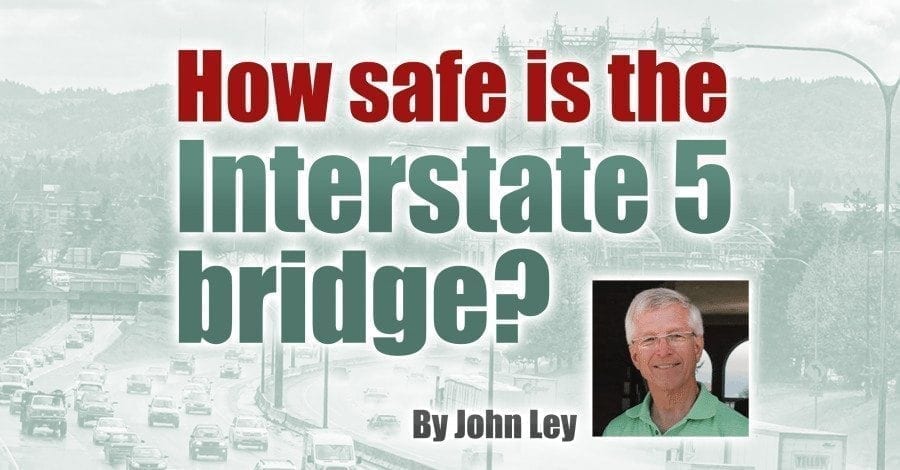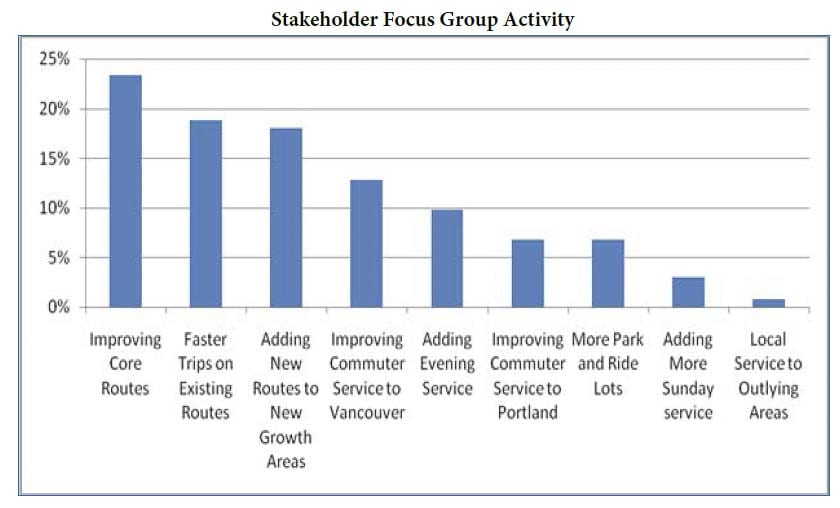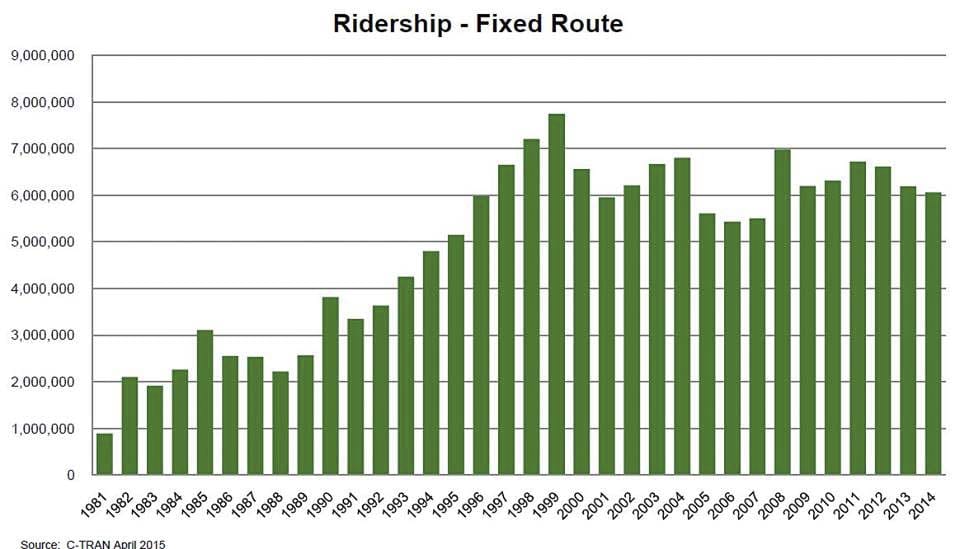Camas resident John Ley details the decline of C-TRAN’s Express Bus ridership
In the battle over the Columbia River Crossing (CRC), citizens were told by the Oregon Supreme Court that the CRC was simply “a light rail project in search of a bridge.“ TriMet’s desire to extend its MAX light rail into Vancouver drove the entire $3.5 billion project. Here’s a link to a Willamette Week story:

https://www.wweek.com/portland/article-17566-a-bridge-too-false.html
The CRC was killed in 2013 by the Washington legislature. Citizens thanked Senators Don Benton and Ann Rivers and the Republican-led Washington Senate. The demise of the light rail driven CRC was for many reasons. There were tolls, light rail concerns, it was “a bridge too low,” a host of pork barrel spending for non-bridge related projects, and the huge mismanagement by David Evans and Associates, to name just a few reasons.
Fast forward and today citizens are told we must replace the Interstate 5 Bridge. It’s too old, and either stated or implied is: “it’s not safe.” In fact it remains “safe. Here’s a link where I addressed this issue:
How safe is the Interstate 5 bridge?

Just below the headlines of the current debate is a battle — must it include light rail? Or is “light rail ready” enough? Some say, “it should include Bus Rapid Transit” (BRT) in a dedicated lane across the new bridge. Most of these special interest driven people mention that we must include “transit” in order to get federal dollars towards the cost of replacing the bridge. Yet even the CRC budget had $400 million federal dollars not tied to transit, in addition to the $850 million for light rail.
The unasked question
Is there a need for any transit component on a replacement Interstate Bridge?
In late 2018, WSDOT told our Regional Transportation Council (RTC) that we now have 310,000 vehicles crossing the Columbia River via our two bridges, on an average day. That’s almost three times the 109,000 vehicles crossing in 1982, just prior to the opening of the I-205 transportation corridor and the Glenn Jackson Bridge.
Portland has been named as the metropolitan region with the nation’s 10th worst traffic congestion. Here is a link to an Oregonlive.com story:
Surely there is significant demand for mass transit, right?
In a word: “No!”
People prefer their cars. The recent PEMCO survey indicated 94 percent of people in the Pacific Northwest prefer their privately-owned vehicles. Read more here:
http://mynorthwest.com/1123591/northwest-drivers-traffic-seattle-cars/?
C-TRAN operates the only mass transit service to cross the river. It presently operates seven “express” bus routes into Portland. Five of them run the I-5 corridor and two run the I-205 corridor.
How many people ride these express buses a day? Have those numbers increased, as traffic gets more congested?
No. In fact, the ridership is declining. News reports indicate ridership has been in decline at least since 2013 when 1,640 people rode express buses.
I made public records requests seeking updated information. In 2017, “express” bus ridership declined to 1,437 daily riders. In February, I received the 2018 numbers. Just 1,422 people rode C-TRAN “express” buses into Portland on an average day. The decline continues.
That 1,422 people figure represents a 13 percent decline from 2013. Yet the number of vehicles crossing the Columbia River have jumped by 13 percent. Furthermore, assuming one person per vehicle, the 1,422 people on the buses represents just 0.45 percent of the daily traffic crossing the river.
C-TRAN ridership history
One might logically wonder, how is the overall C-TRAN ridership doing? Is it increasing or decreasing?
As reference and information, Clark County population has grown from 347,525 in 2000 to 474,643 in 2017. Here’s a link:
That’s a 36 percent increase.
A 2010 C-TRAN stakeholder survey indicates “improving service to Portland” is low on the list of C-TRAN rider preferences.

And what of C-TRAN ridership history?
The short-term history shows a peak in 2011, and then a decline. This C-TRAN chart shows total ridership peaked in 1999 and has been in decline ever since. There was a small increase in 2017, but overall, ridership is down significantly.

With C-TRAN’s 1999 bus ridership peaking at 7.75 million riders, we now have about 6.1 million bus riders annually. That’s a 20 percent decline during a time which Clark County population increased 36 percent from 347,000 to 474,000 people.
Looking at the numbers, there is no need for more mass transit service into Portland, be it light rail or Bus Rapid Transit.
John Ley is a Camas resident who is an advocate for responsible and responsive government.




